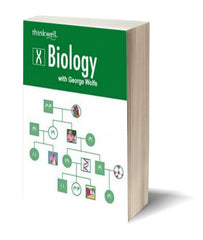12.1 Introduction to Animal Systems and Homeostasis
12.1.1 Animal Homeostasis
12.1.2 Mechanisms of Homeostasis
12.1.3 Animal Tissues: Epithelial Tissue
12.1.4 Animal Tissues: Loose Connective Tissue
12.1.5 Animal Tissues: Dense, Fluid, and Supportive Connective Tissue
12.1.6 Animal Tissue: Muscle and Nerve Tissue
12.2 The Digestive System
12.2.1 Introduction to the Digestive System
12.2.2 The Beginning of Chemical Digestion
12.2.3 Chemical Digestion in the Small Intestine
12.2.4 Human Nutrition: Absorption
12.2.5 Egestion
12.3 Gas Exchange and Transport Systems
12.3.1 Introduction to the Gas Exchange of Animals
12.3.2 Human Gas Exchange System
12.3.3 Human Gas Exchange: The Roles of Respiratory Pigments
12.3.4 Carbon Dioxide Transport
12.3.5 Structure of the Human Heart
12.4 Circulation
12.4.1 Maintaining the Human Heartbeat
12.4.2 Human Circulation: Blood Vessels
12.5 Blood Pressure and Clotting
12.5.1 Human Circulation: Blood Pressure
12.5.2 Blood Clotting
12.6 Human Excretion
12.6.1 Human Excretion: Waste Processing
12.6.2 Human Excretion: Urinary System Structure
12.6.3 The Nephron: Blood Filtration and Urine Production
12.7 The Immune System: An Introduction
12.7.1 The Immune Response: Nonspecific Defenses
12.7.2 The Immune System: Structure and Function
12.7.3 Immunity: Clonal Selection Theory
12.7.4 Immune Response: An Overview
12.7.5 T Cells: Helper T Activation
12.7.6 T Cells: Helper and Cytotoxic T Cell Effects
12.8 The Immune System Continued
12.8.1 B Cells: The Humoral Response
12.8.2 Antibodies and DNA Rearrangement
12.8.3 Antibody Mechanisms
12.9 HIV and the Immune System
12.9.1 HIV: An Attack on the Immune System
12.10 The Endocrine System
12.10.1 Human Regulation: Endocrine Control and Signal-Transduction Pathways
12.10.2 The Endocrine System
12.10.3 Endocrine Function: Oscillations in Hormone Levels
12.11 The Ovarian and Uterine Cycles
12.11.1 The Ovarian and Uterine Cycles: Preparation for Pregnancy
12.11.2 Hormonal Events during the Female Reproductive Cycle
12.12 The Nervous System
12.12.1 The Central and Peripheral Nervous Systems and the Neuron
12.12.2 Human Regulation: Nervous System: Nerve Function and Reflexes
12.13 The Nerve Impulse
12.13.1 Human Regulation: The Nerve Impulse: General Events
12.13.2 Human Regulation: The Nervous System and the Action Potential
12.13.3 Human Regulation: Synaptic Events: Cell-Cell Communication
12.13.4 The Nervous System: A Phylogenetic Perspective
12.13.5 The Human Brain
12.13.6 Processing Centers of the Human Brain
12.14 Motor Mechanisms
12.14.1 Motor Control: Muscle Microstructure
12.14.2 The Neuromuscular Junction: The Contraction Is Triggered
12.14.3 The Sliding Filament: Interaction of ATP, Actin, Myosin, and Calcium
12.15 Sensory Reception
12.15.1 Sensory Systems: An Introduction
12.15.2 Photoreceptors and the Vertebrate Eye
12.15.3 The Ear and Equilibrium
12.15.4 The Ear and Hearing








